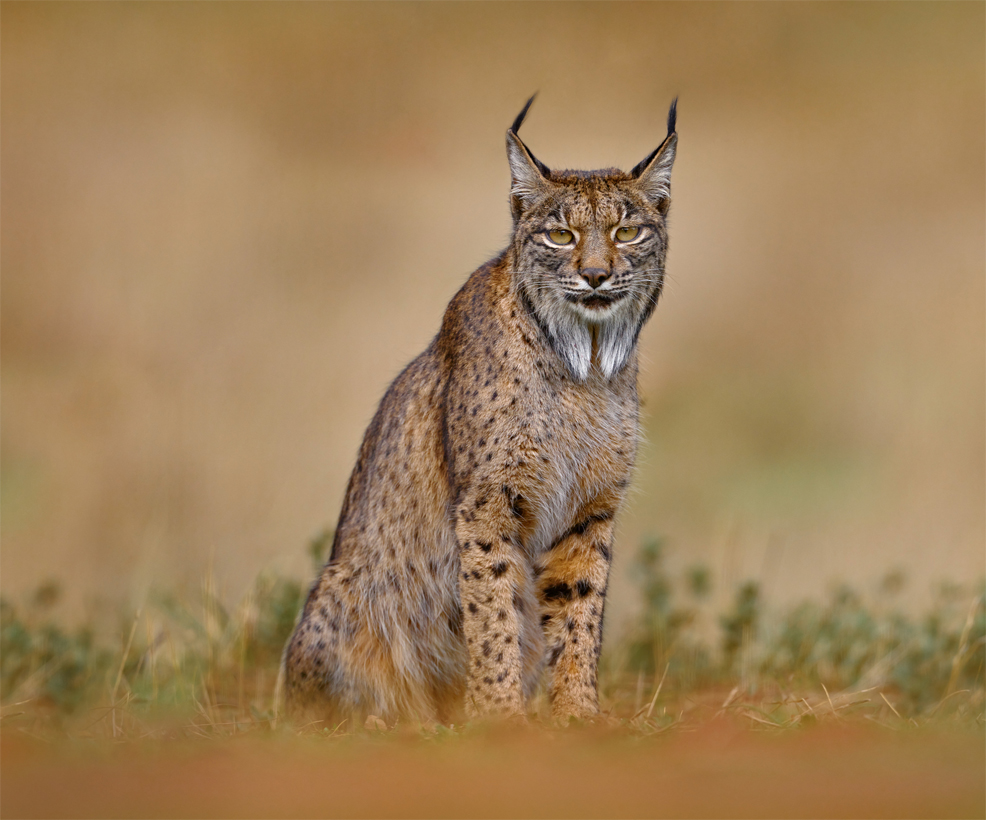
24th June 2024 One of world's rarest cats is no longer endangered The conservation status of the Iberian lynx, until recently the world's rarest cat, has been upgraded from endangered to vulnerable, after a surge in their numbers.
The Iberian lynx (Lynx pardinus) is a medium-sized wild cat, one of the four extant species within the Lynx genus. The animal is known for its distinctive features – including tufted ears, a short tail with black tip, and a striking spotted coat. It lives in scrub forests and maquis thickets of the Iberian Peninsula, primarily in Spain and Portugal. The lynx's diet consists mainly of rabbits, which constitute up to 90% of its intake, making it highly specialised and vulnerable to fluctuations in prey availability. In the 19th century, the Iberian lynx inhabited not only Spain and Portugal but even southern France. During the 20th century, however, it faced a severe decline due to habitat loss, decreasing rabbit populations caused by disease, road accidents, and hunting. From the 1950s to the late 1970s, a law passed under the Spanish dictator Franco classified the animals as "vermin", allowing them to be legally hunted. In 1960, the Iberian lynx's population stood at 5,000. Within 20 years, this figure fell to less than 2,000 individuals, confined to small, fragmented areas in southern Spain and Portugal. By the 1990s, less than 1,000 remained and the species had lost 80% of its former habitat range. The survival prospects for the Iberian lynx reached a low point in 2001, with just 62 mature individuals in the wild – including only a quarter as breeding females – living in two isolated pockets of Andalusia. This led the International Union for Conservation of Nature (IUCN) to classify the animal as "critically endangered" in 2002. Following this announcement, major conservation programmes got underway to save the Iberian lynx. These focused on several initiatives, such as boosting its main food source (the European rabbit), restoring scrublands and forests, making infrastructure safer, and releasing hundreds of captive lynxes into the wild. Once teetering on the brink of extinction, the Iberian lynx gradually made a comeback, with its numbers and habitat range increasing. In 2015, the IUCN upgraded its status from "critically endangered" to "endangered". Since then, extensive conservation efforts have continued. This month, another milestone in the species' recovery occurred, with its status receiving a further upgrade – from "endangered" to "vulnerable".
According to the latest census, the number of mature individuals is now 648, a ten-fold increase compared to the start of the century. When including both young and mature animals, the figure is over 2,000. The area occupied by the Iberian lynx has expanded from 449 km² to at least 4,541 km². There are now 14 main population clusters with stable presence and confirmed reproduction (13 in Spain, plus one in Portugal). Francisco Javier Salcedo Ortiz, Coordinator of the LIFE Lynx-Connect project, which led the conservation programme, described it as the "greatest recovery of a cat species ever achieved through conservation". "This success is the result of committed collaboration between public bodies, scientific institutions, NGOs, private companies, and community members including local landowners, farmers, gamekeepers and hunters, and the financial and logistical support of the European Union LIFE project," he said. "There is still a lot of work to do to ensure that Iberian lynx populations survive, and the species recovers throughout its indigenous range. Looking ahead, there are plans to reintroduce the Iberian lynx to new sites in central and northern Spain." "The significant recovery of the Iberian lynx demonstrates that even the most threatened species can be brought back from the brink of extinction through committed, science-based conservation action and provides hope for those working to protect wildlife across the globe," said Sarah Durant, Professor at the Zoological Society of London. With ongoing conservation work, this majestic feline's status could receive yet another upgrade in the relatively near future. The Iberian lynx's total population would need to reach 3,000 or more, including 750 breeding females. According to recent assessments, such a target is achievable by 2040. Looking to the more distant future, the IUCN notes: "enough suitable habitat remains that the species could reach Fully Recovered status in 100 years, assuming conservation efforts continue with maximum efficacy."
Comments »
If you enjoyed this article, please consider sharing it:
|
||||||








